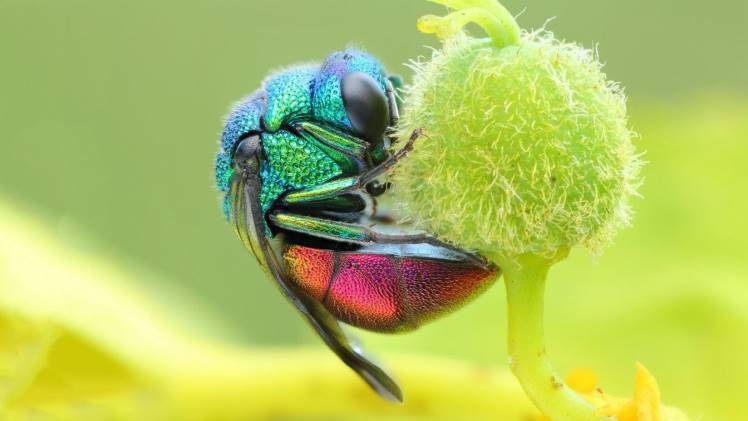Macro Photography Basics

Macro photography is an extreme close-up style of photograph that focuses on small subjects and living organisms. It often serves to showcase nature’s stunning beauty, but can also be applied to various other topics.
Macro Lenses
When photographing macro subjects, a lens with an magnification ratio of 1:1 or 1:2 is ideal. You can find various lenses on the market, from kit-lenses included with your camera to dedicated macro lenses designed specifically for professional photographers.
When selecting a lens, take into account its focus distance. Some kits and zoom lenses only enable focusing up to a certain distance while others offer much wider coverage. Check your camera’s technical specs to determine what the minimum focusing distance for your lens is.
The Aperture and Depth of Field
When photographing with a macro lens, the aperture plays an important role. A wide open aperture (like f/1.4 or f/1.8) may blur the background while still giving your subject plenty of focus and definition. Conversely, smaller apertures like f/8 or f/11 enable your subject to stand out in the scene while still keeping everything else sharply in focus.
Focusing Your Lens
Mastering the focus of a macro lens is one of the most essential skills to learn before taking macro photos. A correctly-focused lens can make an immense difference in the quality of your images, especially when dealing with tiny details that may not be visible otherwise.
If you’re uncertain of the optimal focus for your lens, taking a test shot is always recommended. That way, you can adjust the settings as necessary to achieve accurate focusing.
Composition and Lighting
It’s easy to overlook the composition of your macro photos, but it’s essential that you pay attention to the environment around your subject. A cluttered background can take away from its impact and draw the eye away from the subject; conversely, shadows and light create soft looks or completely destroy an image.
One way to reduce camera shake and motion during a photo shoot is by using a tripod. This will give you more time to focus on the subject and compose your shot correctly.
Natural Light
For macro photography, the ideal natural light comes outdoors; ample ambient lighting allows for beautiful shots with plenty of detail. Artificial lighting can also be used if necessary for shots taken in low light conditions or with limited natural illumination.
Extension Tubes
A pair of extension tubes is an indispensable element for any good macro lens. These can be used with either a zoom or kit lens to extend its working distance and cost effectively increase close-up pictures of small items. With just a few dollars invested, these inexpensive tubes will give you plenty of options for taking great macro photos.
By visiting Advertisementpro you can get more knowledge about multiple topics.
